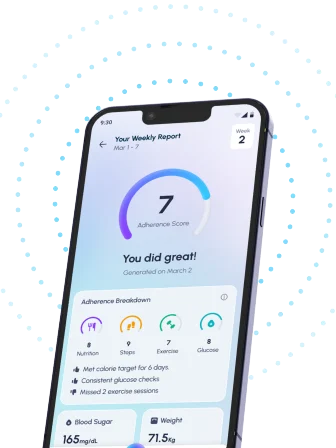Diabetes is a chronic condition that affects millions worldwide. It is broadly categorized into two main types: Type 1 and Type 2. While both types have significant health impacts, understanding their differences helps clarify which might pose greater challenges. Let’s explore the nuances, real-life scenarios, and expert contributions to determine which condition might be “worse.”
Understanding Type 1 Diabetes
What Is Type 1 Diabetes?
Type 1 diabetes is an autoimmune condition where the body’s immune system mistakenly attacks the insulin-producing beta cells in the pancreas. As a result, the body fails to produce insulin, a hormone essential for regulating blood sugar.
Key Characteristics
- Often diagnosed in children and young adults.
- Requires lifelong insulin therapy.
- Symptoms include excessive thirst, frequent urination, fatigue, and weight loss.
Challenges of Managing Type 1 Diabetes
- Daily insulin injections or an insulin pump are necessary.
- Blood sugar levels can fluctuate dramatically.
- Higher risk of diabetic ketoacidosis (DKA), a life-threatening condition.
Understanding Type 2 Diabetes
What Is Type 2 Diabetes?
Type 2 diabetes occurs when the body becomes resistant to insulin or when the pancreas does not produce enough insulin. It is primarily linked to lifestyle factors and genetics.
Key Characteristics
- Commonly diagnosed in adults, though cases in children are rising.
- Can often be managed with lifestyle changes and oral medications.
- Symptoms include increased hunger, fatigue, blurred vision, and slow-healing sores.
Challenges of Managing Type 2 Diabetes
- Lifestyle changes require consistent effort and discipline.
- Long-term complications include heart disease, kidney damage, and nerve issues.
- Risk of developing severe complications if untreated.
Key Differences Between Type 1 and Type 2 Diabetes
| Feature | Type 1 Diabetes | Type 2 Diabetes |
|---|---|---|
| Cause | Autoimmune reaction | Insulin resistance, lifestyle, and genetics |
| Insulin Production | None or very little | Reduced or inefficient use |
| Treatment | Insulin therapy | Lifestyle changes, medications, insulin (in severe cases) |
| Age of Onset | Childhood or adolescence | Mostly adults, increasing in children |
| Prevention | Not preventable | Often preventable with healthy lifestyle |
Real-Life Scenarios
Anita’s Journey with Type 1 Diabetes
Anita, a 14-year-old from Mumbai, was diagnosed with Type 1 diabetes at the age of 10. She faces challenges such as balancing her insulin intake with her meals and physical activities. Despite the hurdles, Anita manages her condition with a continuous glucose monitor and support from her family.
Ravi’s Struggle with Type 2 Diabetes
Ravi, a 45-year-old IT professional in Bangalore, was diagnosed with Type 2 diabetes after years of an unhealthy diet and a sedentary lifestyle. Through regular exercise, a balanced diet, and oral medications, Ravi has significantly improved his blood sugar control.
Expert Contributions
Dr. Ayesha Patel, Endocrinologist
“While Type 1 diabetes is more challenging due to its autoimmune nature, Type 2 diabetes is rapidly becoming a global concern because of the rising obesity rates and unhealthy lifestyles. Both conditions require personalized management to minimize complications.”
Dr. Arjun Singh, Diabetologist
“Type 2 diabetes is more prevalent in India due to changing dietary patterns. Early detection and intervention are key to managing the condition effectively.”
Recommendations Grounded in Proven Research and Facts
Dr. Kavita Nair’s Advice
“Adopting a balanced diet rich in fiber, regular physical activity, and routine check-ups are essential for managing both types of diabetes. For Type 1 diabetes, innovations like artificial pancreas systems offer hope for improved control.”
Facts You Need to Know
- India is known as the diabetes capital of the world, with millions affected by Type 2 diabetes.
- Early diagnosis is crucial for preventing complications.
- Regular screening is recommended for individuals with a family history of diabetes.
Factual and Reliable Information
Diabetes, whether Type 1 or Type 2, can lead to severe complications if not managed effectively. While Type 1 requires lifelong insulin therapy, Type 2 can often be managed through lifestyle modifications and medications. Staying informed and proactive is key.
FAQs
1. Which is more serious: Type 1 or Type 2 diabetes?
Both types can be serious if not managed properly. Type 1 requires lifelong insulin, while Type 2 is often linked to lifestyle factors and may lead to complications if untreated.
2. Can Type 2 diabetes turn into Type 1?
No, Type 2 diabetes cannot become Type 1. They are distinct conditions with different causes and treatments.
3. What are the early symptoms of diabetes?
Early symptoms include excessive thirst, frequent urination, fatigue, blurred vision, and unintentional weight loss.
4. How can diabetes be prevented?
While Type 1 cannot be prevented, Type 2 can often be prevented through a healthy diet, regular exercise, and maintaining a healthy weight.
5. Are there any cures for diabetes?
Currently, there is no cure for diabetes. However, it can be effectively managed with medical treatments and lifestyle changes.



